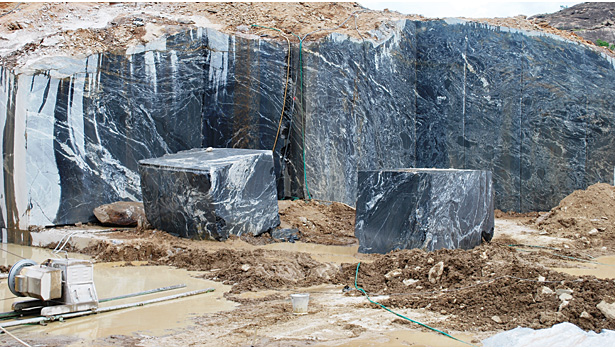Checking Out Granite Quarries in South Africa Market: From Quarry to Masterpiece
Checking Out Granite Quarries in South Africa Market: From Quarry to Masterpiece
Blog Article
Uncovering the Rich History and Lasting Practices of Granite Quarrying
As we base on the precipice of revealing the elaborate tapestry of granite quarrying, a trip through time discloses not just the physical act of drawing out rock but additionally the cultural and historical value woven into the extremely fabric of this method. From the old beginnings that laid the foundation for contemporary quarrying strategies to the sustainable methods that are forming the future of this sector, each chisel mark on granite surfaces narrates waiting to be unearthed (granite quarries in south africa). The tradition of granite quarrying extends much beyond simple removal; it is a testimony to human ingenuity, resilience, and the enduring appeal of this magnificent stone
Old Beginnings of Granite Quarrying
Going back to old civilizations, the method of quarrying granite has been an indispensable component of human background and architectural development. The earliest evidence of granite quarrying go back to ancient Egypt, where large pyramids and detailed sculptures were crafted from this durable stone. The Egyptians utilized primitive tools to extract granite blocks from quarries, showcasing the significance of this material in their huge constructions.
Moving on in background, the Greeks additionally made substantial payments to the quarrying of granite. The Greeks used granite in various architectural marvels, such as temples and sculptures, demonstrating their skill in shaping and sculpting this sturdy rock. The Romans better improved the strategies of quarrying granite, using innovative devices like blades and hammers to essence and form granite for their iconic frameworks.
Via the centuries, the method of quarrying granite has developed, with modern technologies boosting efficiency while keeping the classic charm of this natural stone - granite quarries in south africa. From old human beings to modern home builders, the tradition of granite quarrying remains to form our globe
Development of Quarrying Techniques
The advancement of quarrying methods has actually been marked by a continual progression towards greater effectiveness and accuracy in extracting granite. Early quarrying strategies involved hands-on labor with fundamental tools such as blades, hammers, and wedges to remove granite blocks from the planet.
In more current times, the development of machinery changed the quarrying industry, allowing much faster extraction rates and raised productivity. Technologies such as diamond cord saws, high-pressure water jets, and pneumatic drills have ended up being typical in modern quarries, permitting precise cutting and decreased waste. In addition, advancements in computer-controlled devices and 3D modeling have actually maximized quarrying procedures, leading to very little environmental influence and boosted sustainability techniques. As the need for granite remains to rise, the evolution of quarrying techniques remains essential to meeting market needs effectively and sustainably.
Social Relevance of Granite
Granite holds an extensive cultural importance across various civilizations as a result of its long-lasting existence in architectural masterpieces and prized monoliths. From the impressive pyramids of Egypt to the detailed carvings of the Angkor Wat holy place in Cambodia, granite has actually been a material of choice check out here for sharing grandeur and longevity in social heritage. In ancient Rome, granite columns adorned holy places and public structures, symbolizing toughness and durability. The cultural value of granite expands beyond its physical attributes; it personifies durability, stability, and eternity, making it a symbol of sustaining traditions and traditions.

Lasting Practices in Quarrying
Amidst the rich background of granite quarrying and its cultural importance exists an expanding emphasis on lasting methods within the industry. As ecological recognition and issues about source exhaustion have enhanced internationally, the quarrying industry has actually progressively embraced lasting techniques to minimize its effect on the atmosphere and surrounding areas.

In addition, reclamation and rehabilitation of quarry sites post-extraction are integral to sustainable practices. By restoring quarried areas to an all-natural or beneficial state, such as creating wild animals environments or entertainment rooms, quarriers can counter the ecological footprint of their operations and contribute favorably to the neighborhood ecological community.
Heritage of Granite Quarrying
With a historic background steeped in craftsmanship and commercial progression, what withstanding effect has granite quarrying left on the landscape of modern society? The heritage of granite quarrying goes beyond simple extraction techniques; it has actually shaped architectural wonders, city landscapes, and cultural heritage worldwide. The sturdy nature of granite has actually made it a preferred choice for monuments, buildings, and facilities, standing as a testimony to the ability and creativity of quarry employees across generations.
Moreover, the economic footprint of granite quarrying can not be forgotten. The industry proceeds to provide job opportunity and drive neighborhood economic situations in regions where granite removal prevails. It has actually additionally stimulated technical advancements in quarrying methods and equipment, leading to a lot more efficient and lasting methods.
In regards to sustainability, the legacy of granite quarrying includes initiatives to mitigate environmental influences through improvement tasks and responsible resource monitoring. By balancing economic rate of interests with ecological stewardship, the industry aims to make certain that future generations can continue to take advantage of this long-lasting natural deposit.
Conclusion

Report this page